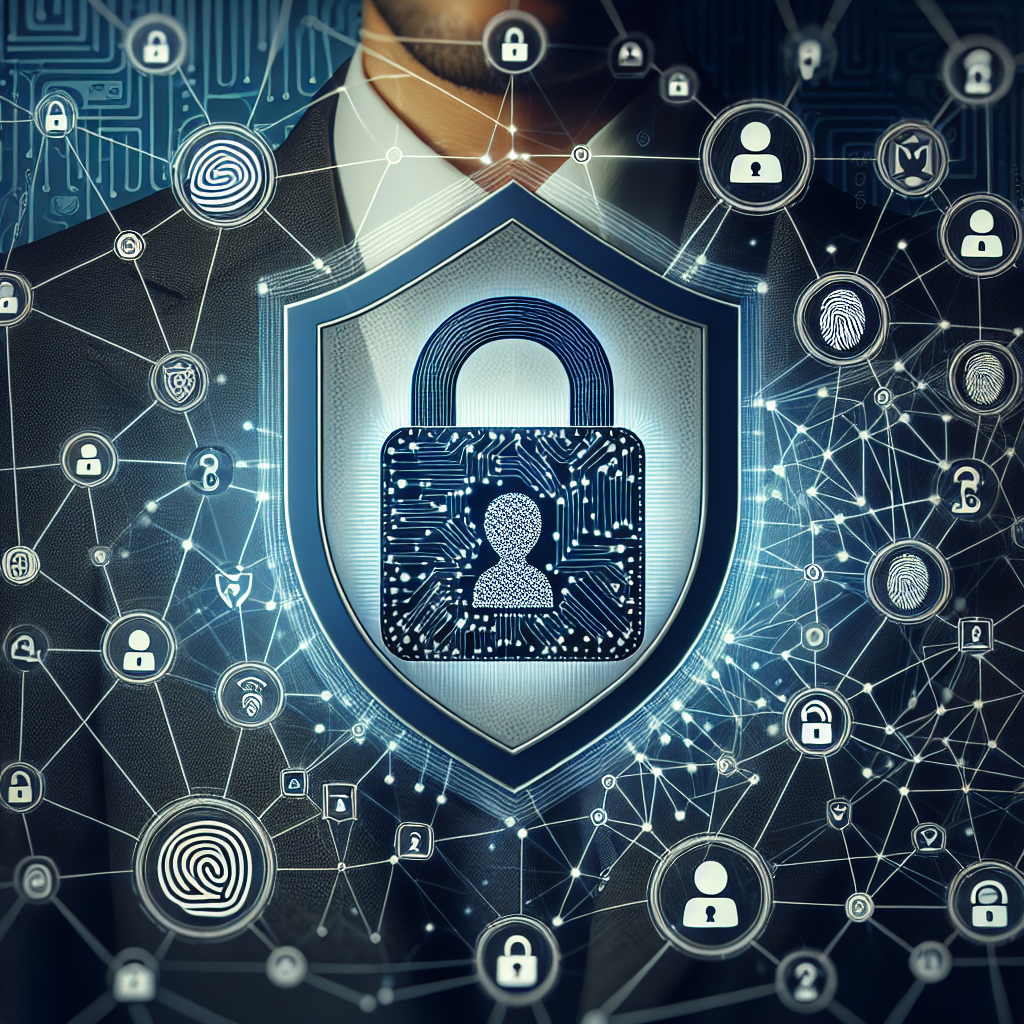Your cart is currently empty!
Tag: Protecting
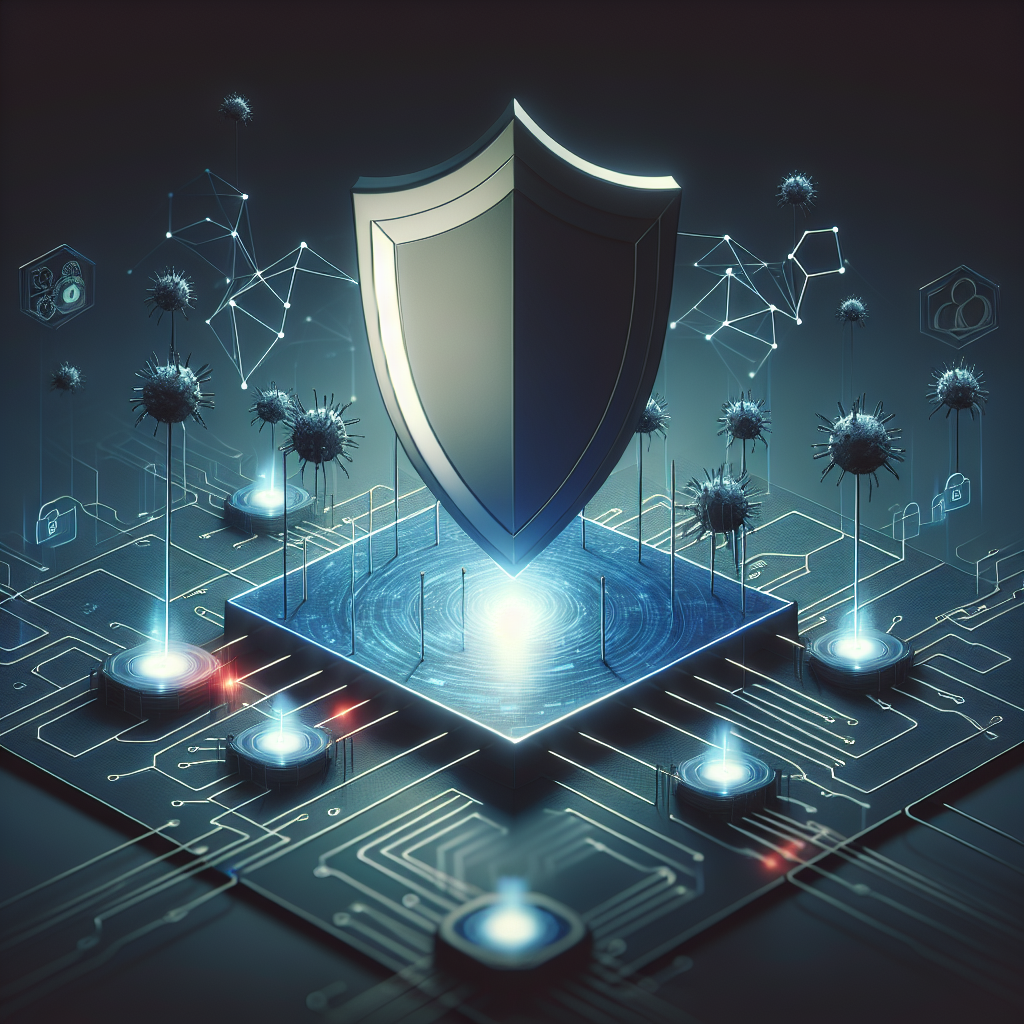
The Importance of Cybersecurity in IT Consulting: Protecting Your Business from Threats
In today’s digital age, the importance of cybersecurity cannot be overstated, especially for businesses that rely heavily on technology. IT consulting firms play a crucial role in helping businesses navigate the complexities of cybersecurity and protect their valuable data from cyber threats.Cybersecurity is the practice of protecting systems, networks, and data from digital attacks. These attacks can come in various forms, such as malware, ransomware, phishing, and data breaches. The consequences of a cyber attack can be devastating for a business, including financial loss, damage to reputation, and legal repercussions.
IT consulting firms are well-equipped to assess a business’s cybersecurity needs and implement effective strategies to protect against cyber threats. They have a deep understanding of the latest cybersecurity trends and technologies, allowing them to create customized solutions that meet the specific needs of each client.
One of the key benefits of working with an IT consulting firm is their expertise in identifying potential vulnerabilities in a business’s IT infrastructure. By conducting thorough assessments and audits, consultants can pinpoint areas of weakness and recommend strategies to strengthen defenses against cyber attacks.
In addition to identifying vulnerabilities, IT consulting firms can also help businesses develop robust cybersecurity policies and procedures. These policies outline best practices for data security, employee training, incident response, and compliance with industry regulations. By following these policies, businesses can minimize the risk of a cyber attack and ensure that they are prepared to respond effectively in the event of a breach.
Furthermore, IT consulting firms can provide ongoing monitoring and support to help businesses stay ahead of emerging cyber threats. By continuously monitoring systems and networks for suspicious activity, consultants can detect and respond to potential threats before they escalate into a full-blown attack. This proactive approach to cybersecurity is essential for protecting a business’s sensitive data and maintaining the trust of customers and stakeholders.
Overall, the importance of cybersecurity in IT consulting cannot be overstated. By working with a reputable consulting firm, businesses can proactively protect their valuable data from cyber threats and minimize the risk of a costly breach. Investing in cybersecurity is not only essential for safeguarding a business’s reputation and bottom line but also for ensuring long-term success in today’s digital landscape.

Cybersecurity and IT Solutions: Protecting Your Business from Threats
In today’s digital age, cybersecurity is more important than ever. With the rise of cyber threats like malware, ransomware, and phishing attacks, businesses of all sizes need to prioritize their IT security measures to protect their sensitive data and networks.Cybersecurity refers to the practice of protecting computer systems, networks, and data from cyberattacks. This includes implementing security measures such as firewalls, antivirus software, encryption, and multi-factor authentication to prevent unauthorized access and data breaches.
One of the most common cybersecurity threats facing businesses today is malware. Malware is malicious software that is designed to disrupt, damage, or gain unauthorized access to a computer system or network. This can lead to data loss, financial fraud, and reputational damage for businesses.
Ransomware is another major threat that businesses need to be aware of. Ransomware is a type of malware that encrypts a victim’s files and demands payment in exchange for the decryption key. This can result in significant financial losses for businesses, as well as damage to their reputation and customer trust.
Phishing attacks are also a common cybersecurity threat that businesses need to guard against. Phishing attacks involve sending fraudulent emails or messages that appear to be from a legitimate source in order to trick recipients into revealing sensitive information such as passwords or financial data.
To protect your business from cyber threats, it is essential to invest in robust IT security solutions. This includes implementing firewalls and intrusion detection systems to monitor and block malicious traffic, as well as antivirus software to detect and remove malware from your systems.
Encryption is another important security measure that businesses should implement to protect their data. Encryption involves encoding data so that it can only be accessed by authorized users with the decryption key, making it much harder for cybercriminals to steal sensitive information.
Multi-factor authentication is also a crucial security measure that businesses should implement to protect their systems and data. Multi-factor authentication requires users to provide multiple forms of verification, such as a password and a one-time code sent to their mobile device, to access their accounts.
In addition to implementing these security measures, businesses should also regularly update their software and systems to patch any vulnerabilities that could be exploited by cybercriminals. Employee training is also important, as human error is often a major factor in successful cyber attacks.
By prioritizing cybersecurity and investing in IT solutions to protect your business from threats, you can safeguard your sensitive data, networks, and reputation from cybercriminals. Don’t wait until it’s too late – take proactive steps now to secure your business and prevent costly data breaches and cyberattacks.

Protecting Your Data: The Importance of Regularly Testing Your Backup and Recovery Systems
In today’s digital age, data is more valuable than ever. From personal photos and documents to critical business information, the data stored on our devices is essential to our everyday lives. That’s why it’s crucial to have a reliable backup and recovery system in place to protect your data in case of any unforeseen circumstances.Regularly testing your backup and recovery systems is an essential part of ensuring the security and accessibility of your data. Here are a few reasons why testing is so important:
1. Identify and Fix Issues: Regular testing allows you to identify any potential issues or weaknesses in your backup and recovery systems before they become a problem. By running regular tests, you can ensure that your data is being backed up properly and can be recovered in a timely manner.
2. Verify Data Integrity: Testing your backup and recovery systems helps to verify the integrity of your data. By regularly testing your backups, you can ensure that your data is being stored accurately and securely, without any corruption or loss.
3. Ensure Compliance: Many industries have strict regulations regarding data backup and recovery. By regularly testing your systems, you can ensure that you are meeting compliance requirements and avoiding any potential fines or penalties.
4. Minimize Downtime: In the event of a data loss or system failure, having a reliable backup and recovery system in place can help minimize downtime and keep your operations running smoothly. By regularly testing your systems, you can ensure that you can quickly recover your data and get back to business as usual.
5. Peace of Mind: Knowing that your data is securely backed up and can be easily recovered in case of an emergency provides peace of mind. Regularly testing your backup and recovery systems can give you the confidence that your data is safe and protected at all times.
In conclusion, regularly testing your backup and recovery systems is essential for protecting your data and ensuring its security and accessibility. By identifying and fixing issues, verifying data integrity, ensuring compliance, minimizing downtime, and providing peace of mind, testing plays a crucial role in maintaining the integrity of your data. Make sure to schedule regular tests of your backup and recovery systems to keep your data safe and secure.

Cybersecurity and IT Solutions: Protecting Your Business
In today’s digital age, cybersecurity has become a top priority for businesses of all sizes. With the increasing number of cyber threats and attacks, it is more important than ever for companies to invest in robust IT solutions to protect their sensitive data and information.Cybersecurity is the practice of defending computers, servers, mobile devices, electronic systems, networks, and data from malicious attacks. These attacks can come in various forms, such as malware, ransomware, phishing, and social engineering. The consequences of a cyber attack can be devastating for a business, including financial loss, damage to reputation, and legal liabilities.
To protect your business from cyber threats, it is essential to implement comprehensive IT solutions that address all aspects of cybersecurity. This includes installing antivirus software, firewalls, and intrusion detection systems to prevent unauthorized access to your network. Regularly updating software and conducting security audits can also help identify any vulnerabilities and patch them before they can be exploited by hackers.
Employee training is another crucial aspect of cybersecurity. Many cyber attacks are the result of human error, such as clicking on a malicious link or falling for a phishing scam. By educating your employees on best practices for online security, you can reduce the risk of a data breach and protect your business from potential threats.
In addition to implementing security measures, it is important to have a response plan in place in case of a cyber attack. This includes having backups of your data, a communication plan to notify customers and stakeholders, and working with cybersecurity professionals to investigate the breach and prevent it from happening again.
Overall, investing in cybersecurity and IT solutions is essential for protecting your business in today’s digital world. By taking proactive steps to secure your network and data, you can minimize the risk of a cyber attack and safeguard your company’s reputation and bottom line. Remember, when it comes to cybersecurity, it’s better to be safe than sorry.
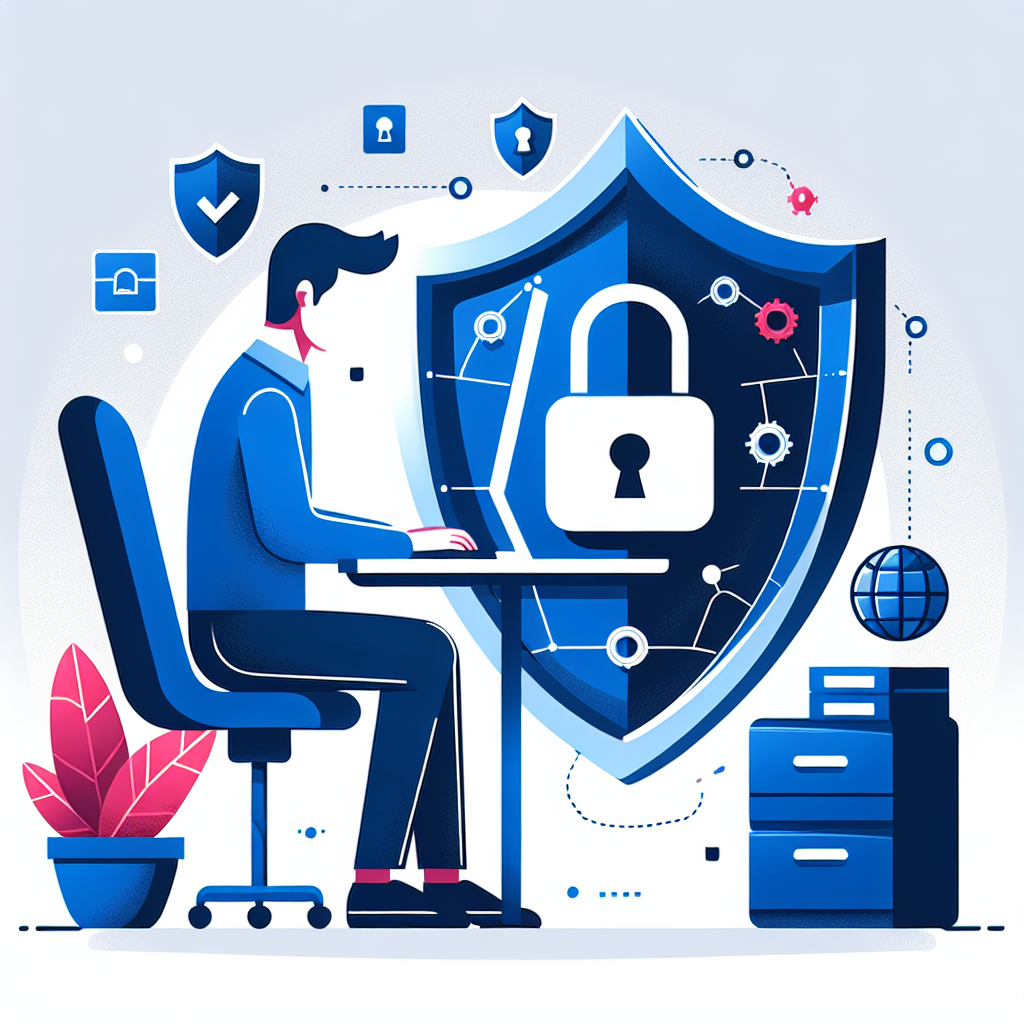
Protecting Your Personal Data: Cybersecurity Tips for Individuals
In today’s digital age, protecting your personal data has never been more important. With cyber threats on the rise, it’s crucial for individuals to take proactive steps to safeguard their information from falling into the wrong hands. Here are some cybersecurity tips to help you keep your personal data safe:1. Use strong, unique passwords: One of the easiest ways for cybercriminals to gain access to your personal data is by guessing your passwords. Make sure to use strong, unique passwords for all your accounts, and avoid using the same password for multiple accounts. Consider using a password manager to securely store and manage your passwords.
2. Enable two-factor authentication: Two-factor authentication adds an extra layer of security to your accounts by requiring a second form of verification, such as a text message or email, in addition to your password. Enable this feature on all your accounts that offer it to further protect your personal data.
3. Keep your software up to date: Software updates often include security patches that help protect your devices from vulnerabilities that cybercriminals can exploit. Make sure to regularly update your operating system, apps, and antivirus software to stay protected against the latest threats.
4. Be cautious of phishing scams: Phishing scams are fraudulent attempts to trick individuals into revealing personal information, such as passwords or credit card details. Be wary of emails, text messages, or phone calls from unknown sources, and avoid clicking on suspicious links or providing sensitive information.
5. Secure your Wi-Fi network: Make sure to secure your home Wi-Fi network with a strong password and encryption to prevent unauthorized access. Avoid using public Wi-Fi networks for sensitive activities, such as online banking or shopping, as they are often unsecured and can be easily compromised by cybercriminals.
6. Be mindful of what you share online: Be cautious about the information you share on social media and other online platforms. Avoid posting personal details, such as your address, phone number, or birthdate, as this information can be used by cybercriminals to steal your identity.
7. Monitor your accounts for suspicious activity: Regularly check your bank statements, credit reports, and online accounts for any unusual or unauthorized activity. Report any suspicious activity to the appropriate authorities and take immediate steps to secure your accounts.
By following these cybersecurity tips, you can help protect your personal data from cyber threats and safeguard your privacy online. Remember that cybersecurity is a shared responsibility, and it’s important to stay vigilant and proactive in protecting your information in today’s digital world.
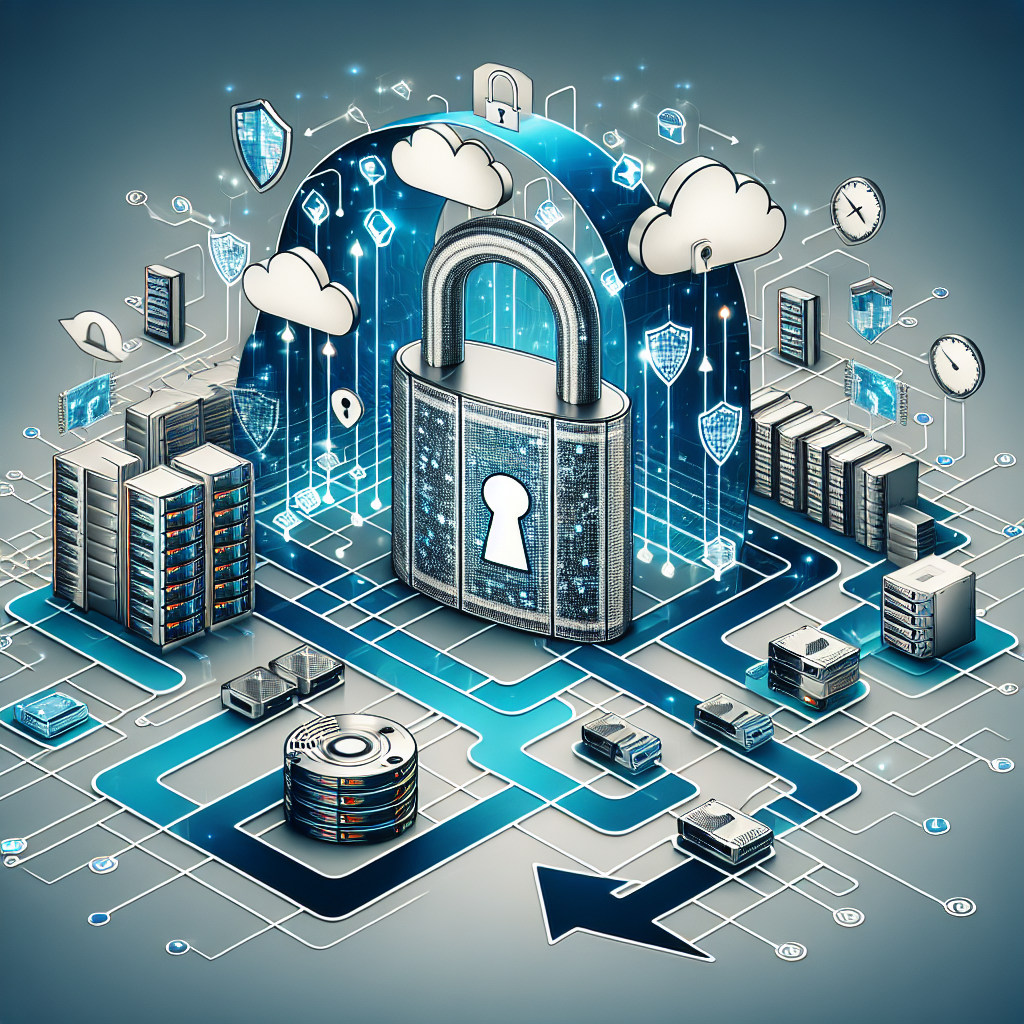
Protecting Your Data: The Key to Successful Backup and Recovery Strategies
In today’s digital age, protecting your data is more important than ever. With cyber threats on the rise and data breaches becoming increasingly common, having a solid backup and recovery strategy in place is essential for businesses and individuals alike. Without proper safeguards in place, the consequences of losing important data can be catastrophic.One of the key components of a successful backup and recovery strategy is ensuring that your data is regularly backed up. This means creating copies of your data and storing them in a safe and secure location. There are many different methods for backing up data, including using external hard drives, cloud storage services, or backup software. It’s important to choose a method that works best for your needs and to ensure that backups are done on a regular basis.
Another important aspect of protecting your data is encryption. Encrypting your data adds an extra layer of security, making it more difficult for hackers to access sensitive information. By encrypting your data, you can ensure that even if it falls into the wrong hands, it will be unreadable without the encryption key.
In addition to backing up and encrypting your data, it’s also important to have a solid recovery plan in place. This means knowing how to restore your data in the event of a loss. Having a detailed recovery plan can help minimize downtime and ensure that your business operations can continue without interruption.
It’s also important to test your backup and recovery strategies regularly to ensure that they are working effectively. This means periodically restoring data from backups to ensure that everything is functioning as it should. By testing your backup and recovery processes, you can identify any potential issues before they become a problem.
In conclusion, protecting your data is crucial in today’s digital world. By implementing a strong backup and recovery strategy, you can safeguard your data from cyber threats and ensure that your business operations can continue without interruption. Remember to regularly backup your data, encrypt sensitive information, and test your recovery processes to ensure that your data is safe and secure.
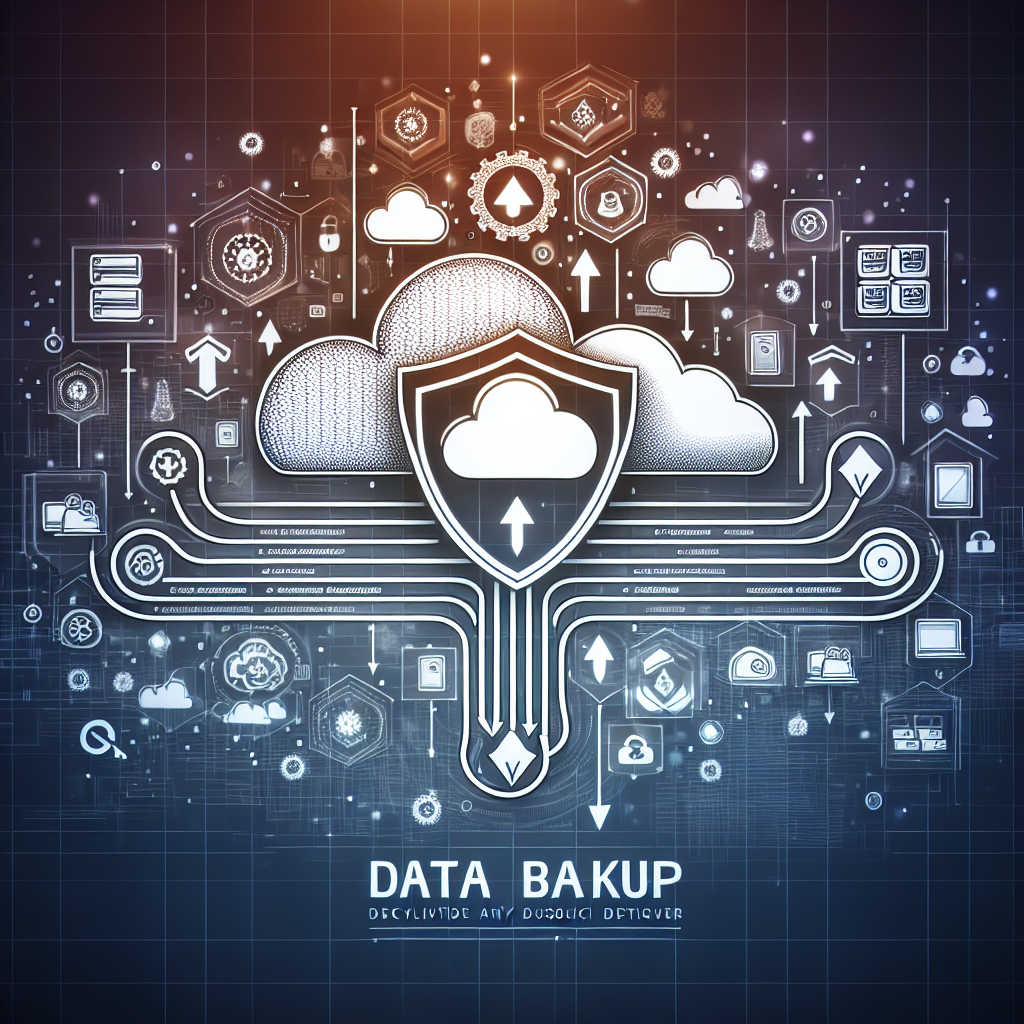
Protecting Your Business: The Ultimate Guide to Data Backup and Recovery
In today’s digital world, data is the lifeblood of any business. From customer information to financial records, data is crucial for the day-to-day operations of any organization. However, with the rise of cyber attacks and natural disasters, protecting this valuable information has become more important than ever. That’s where data backup and recovery come into play.Data backup and recovery is the process of creating copies of your data and storing them in a secure location, so that in the event of a data loss, you can easily restore your information. This process is crucial for businesses of all sizes, as data loss can have serious consequences, including financial loss, damage to reputation, and even legal implications.
So, how can you ensure that your business is properly protected? Here is the ultimate guide to data backup and recovery:
1. Identify your data: The first step in creating a data backup and recovery plan is to identify what data is critical to your business. This includes customer information, financial records, intellectual property, and any other data that is essential for your operations.
2. Choose the right backup solution: There are several backup solutions available, including onsite backups, offsite backups, and cloud backups. Each has its own advantages and disadvantages, so it’s important to choose the solution that best fits your business needs.
3. Set up a backup schedule: Once you have chosen a backup solution, it’s important to set up a regular backup schedule. This will ensure that your data is constantly being backed up and that you can easily recover it in the event of a data loss.
4. Test your backups: It’s not enough to simply create backups – you also need to regularly test them to ensure that they are working properly. This will help you identify any issues before they become a problem and ensure that your data is safe and secure.
5. Create a recovery plan: In addition to backing up your data, it’s important to create a recovery plan that outlines the steps you need to take in the event of a data loss. This plan should include who is responsible for recovering the data, how long it will take, and what steps need to be taken to ensure that your business can continue to operate.
By following these steps, you can ensure that your business is properly protected against data loss. Remember, data backup and recovery is not a one-time process – it requires regular maintenance and testing to ensure that your information is safe and secure. With the right plan in place, you can rest easy knowing that your business is protected against any potential data loss.

Cybersecurity in a Connected World: Protecting Your IoT Devices
In today’s interconnected world, the Internet of Things (IoT) has become an integral part of our daily lives. From smart homes and wearable devices to industrial machinery and medical equipment, IoT devices are revolutionizing the way we live and work. However, as these devices become more prevalent, the need for robust cybersecurity measures to protect them from cyber threats has never been more crucial.IoT devices are essentially small computers that are connected to the internet, allowing them to collect and exchange data with other devices and systems. While this interconnectedness offers numerous benefits, such as increased efficiency and convenience, it also opens up new avenues for cyber attacks. Hackers can exploit vulnerabilities in IoT devices to gain unauthorized access to sensitive information, disrupt operations, or even take control of the devices themselves.
To protect your IoT devices from cyber threats, it is essential to implement strong cybersecurity practices. Here are some tips to help safeguard your IoT devices:
1. Keep your devices up to date: Regularly update the firmware and software of your IoT devices to ensure that they have the latest security patches and bug fixes. Manufacturers often release updates to address known vulnerabilities, so it is crucial to stay current with these updates.
2. Change default passwords: Many IoT devices come with default passwords that are easy for hackers to guess. Change these passwords to unique, strong passwords to prevent unauthorized access to your devices.
3. Secure your network: Use a secure Wi-Fi network with strong encryption and a unique password to protect your IoT devices from unauthorized access. Consider setting up a separate network specifically for your IoT devices to minimize the risk of a breach affecting your other devices.
4. Enable two-factor authentication: Two-factor authentication adds an extra layer of security by requiring users to provide a second form of verification, such as a code sent to their phone, in addition to a password. Enable this feature whenever possible to enhance the security of your IoT devices.
5. Monitor device activity: Keep an eye on the activity of your IoT devices to detect any unusual behavior that may indicate a security breach. Look out for unauthorized access attempts, unexpected data transfers, or changes in device settings.
6. Use a firewall: Install a firewall on your network to monitor and control incoming and outgoing traffic to and from your IoT devices. This can help prevent malicious actors from gaining access to your devices or stealing your data.
By following these cybersecurity best practices, you can protect your IoT devices from cyber threats and enjoy the benefits of a connected world with peace of mind. Remember that cybersecurity is a shared responsibility, so stay vigilant and proactive in safeguarding your devices and data.

Protecting Your Business: A Guide to Data Backup and Recovery Strategies
In today’s digital age, data is the lifeblood of most businesses. From customer information to financial records, data plays a crucial role in the day-to-day operations of a company. However, with the increasing threat of cyber attacks and natural disasters, it has become more important than ever for businesses to have a solid data backup and recovery strategy in place.Data loss can have devastating consequences for a business, including loss of revenue, damage to reputation, and even legal ramifications. Therefore, it is essential for businesses to take proactive steps to protect their data and ensure that they can recover quickly in the event of a disaster.
One of the first steps in creating a data backup and recovery strategy is to assess the data that needs to be protected. This includes identifying critical data that is essential for the operation of the business, as well as any regulatory requirements for data retention. Once this is done, businesses can then determine the best methods for backing up and storing their data.
There are several options available for data backup, including onsite backups, offsite backups, and cloud backups. Onsite backups involve storing data on physical devices such as external hard drives or tape drives, while offsite backups involve storing data in a separate location from the primary business location. Cloud backups, on the other hand, involve storing data on remote servers accessed via the internet.
Each method has its own advantages and disadvantages, so it is important for businesses to assess their specific needs and choose the best option for their situation. For example, onsite backups can be quicker to restore in the event of a disaster, but they are also more vulnerable to physical threats such as theft or fire. Cloud backups, on the other hand, offer greater flexibility and scalability, but they may be subject to internet connectivity issues.
In addition to backing up data, businesses should also have a solid data recovery plan in place. This includes creating regular backup schedules, testing backups to ensure they are working properly, and establishing clear procedures for restoring data in the event of a disaster. It is also important to designate key personnel who will be responsible for managing the data backup and recovery process.
Ultimately, protecting your business data is a critical aspect of safeguarding your company’s future. By implementing a comprehensive data backup and recovery strategy, businesses can minimize the risk of data loss and ensure that they can recover quickly in the event of a disaster. With the right plan in place, businesses can have peace of mind knowing that their data is safe and secure.
